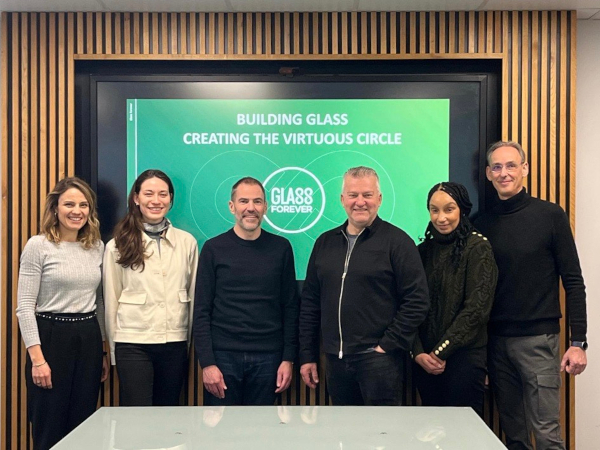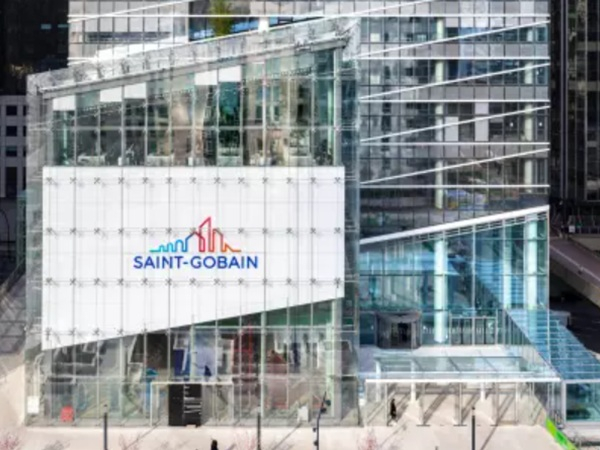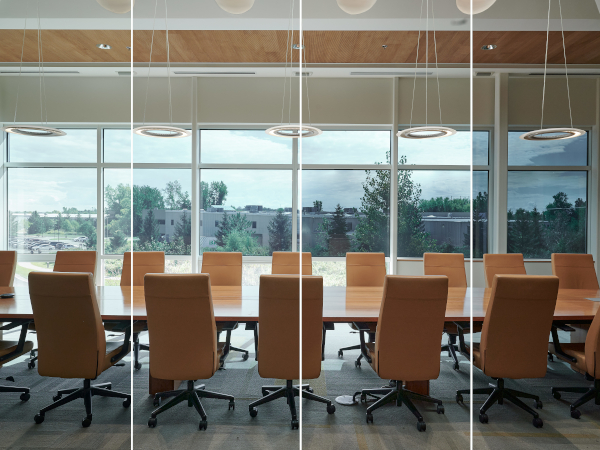Date: 25 September 2013
The Benjamin Franklin Museum, part of Independence National Historical Park in Philadelphia, officially re-opened to the general public today after a two-year, $24 million renovation project that included updates to exhibits and enhancements to the architectural design of the building.Saint-Gobain, one of the world’s largest building materials companies, with North American headquarters outside of Philadelphia in Valley Forge, provided a customized glass solution for the museum through one of its subsidiaries, Saint-Gobain Glass. The customized glass solution helped the design team achieve its main goal of creating a more welcoming entrance to the museum. The company’s glass was also used for an expansive glass window that will allow visitors inside the museum for the first time to appreciate the exterior space once occupied by Benjamin Franklin’s house marked by the iconic “Ghost Structure.”
“Saint-Gobain products are found in some of the most iconic cultural landmarks around the world, from the Palace of Versailles to the Statue of Liberty, but we are especially proud to have our glass featured in the Benjamin Franklin Museum, a national memorial located in our backyard that pays tribute to one of the Founding Fathers of the United States, who made contributions to our everyday lives, much like Saint-Gobain does through its building materials,” said John Crowe, President and CEO of Saint-Gobain in North America.
The Franklin Court complex was designed by world-famous architects Robert Venturi, Denise Scott Brown and John Rauch for the 1976 Bicentennial. In 2011, the National Park Service made the decision to renovate the Ben Franklin Museum for the first time since the bicentennial and hired architectural firm Quinn Evans Architects. Quinn Evans was tasked with designing a more inviting and accessible entry that better accommodates visitors and museum staff.
The firm’s solution was to enclose space once sheltered by a canvas canopy within a uniquely designed glass curtainwall. It permitted the architects to create an entrance lobby and improve access to the underground museum. The curtainwall recapitulates the Flemish bond pattern of Venturi’s brick garden walls with glass “bricks” as large as eight feet in length. A custom ceramic frit pattern is applied to the outer glass surface using images derived from photos of the original hand-molded brick. “We searched for a special glass manufacturer that could bring our vision to life,” said Carl Elefante, FAIA, Principal at Quinn Evans. “Saint-Gobain made it possible for us to experiment with the pattern, color, scale and application technique until we achieved a visual effect that provides the right balance between transparency and reflectivity.”
The process of creating the custom glass began with photographing the original brick wall and developing physical mock-ups of the frit pattern during both the design and construction phases. In order to create pieces of glass that emulate the texture of brick, Saint-Gobain had to customize the glass by moving the fritted layer, conventionally on the inner surface of glass, to the outer surface and heat-fusing the frit to ensure durability. By moving the frit to the outer surface it more effectively captures natural light as conditions fluctuate throughout the day. With glass located at both the outer and inner plane of the curtainwall framing, a “shadow box” effect is achieved, further intensifying the play of light.
Saint-Gobain also provided glass for the very large window designed to provide views of the Ghost House as visitors exit the exhibit. The view window is fabricated with two 8’ by 16’ pieces of low-iron laminated glass, each weighing approximately 1,200 pounds, that are joined by a single vertical sealant joint in the middle.
“This project is a real testament to the diverse capabilities of Saint-Gobain to allow architects the freedom to be creative and original with glass design,” said Crowe. “The new glass designs for the Benjamin Franklin Museum give visitors a glimpse into the life of the influential diplomat and inventor from the start of their visit when they enter the museum until they exit, providing an overlook onto the space of where Franklin’s house once stood.”
About Saint-Gobain in North America
Saint-Gobain, the world’s largest building materials company, has its North American headquarters in Valley Forge, Pennsylvania. As the world leader in sustainable habitat, Saint-Gobain is committed to inventing solutions to help professionals and communities around the world build and renovate comfortable, healthy, economical and energy-efficient buildings. The company has more than 265 locations in North America and approximately 19,000 employees. In the United States and Canada, Saint-Gobain reported sales of approximately $7.9 billion in 2012.
Recognized as a 2009 and 2010 ENERGY STAR Partner of the Year by the U.S. Environmental Protection Agency, Saint-Gobain earned the 2011, 2012 and 2013 ENERGY STAR Sustained Excellence Award, the highest level of recognition for outstanding contributions to protecting the environment through energy efficiency. For more information about Saint-Gobain in North America, connect with the company on Facebook and Twitter.












Add new comment